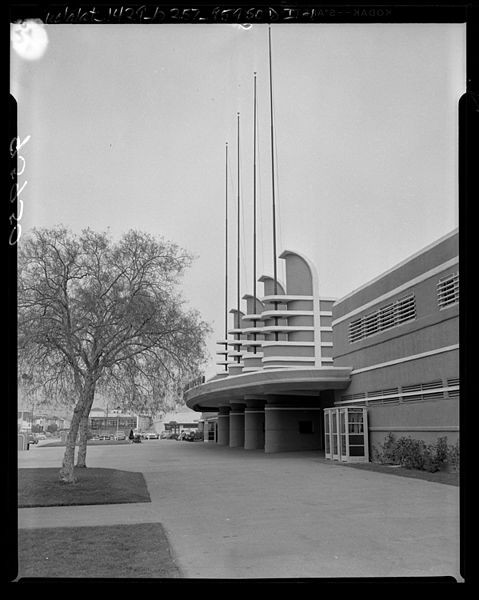
This article comes courtesy of our friend and cenephile Charlotte Neilson, the author of the fascinating design blog Casting Architecture, which discusses architecture and production design.
The life of a building - a few hundred years, if a building is lucky - is just a blip when compared to the billions of years required to shape the natural landscape. Even briefer is the work of a film maker: a pursuit created for momentary entertainment, which reaches completion in just a couple of hours. Strange then, that film has often stepped in to preserve buildings who have met an early demise.
While Architecture and Film have always had an uncomfortable relationship (be it the movie industry’s portrayal of modern buildings as cold and soulless - and usually associated with less than savory occupants or the stereotyping of Architects themselves as delicate, impractical types), the inclusion of a building in a feature film can often become an important part of a building’s story. And sometimes its last bastion.
More on Architecture preserved on Film, after the break...

When LA’s Pan Pacific Auditorium, a grand example of streamlined moderne, burned to the ground in 1989, its glorious 54 year history was reduced to a handful of archival pictures and the memories of a couple of generations of Los Angelites. And, strangely, Xanadu.
Were it not for Olivia Newton John’s Grease follow-up, there would be little record of the building ‘in the round,’ and certainly not in such an accessible format. No hours in front of the microfiche required here - a google search will bring up thousands of copies, digitally re-mastered and ready for delivery. Mind boggling really, considering the film was panned at its release in 1980.

There are many more examples of buildings preserved on film – the Sands Hotel and Casino (demolished in 1996), immortalised in its prime by the original Oceans 11; the Trinity Square Carpark, made famous by the 1975 release Get Carter and given longevity following it’s destruction in 2010; and the illustrious Richfield Oil Tower in Zabriskie Point, recorded just before it was about to be demolished.

Not so well known but equally interesting is David Fowler’s 1963 commission for the Davis family in Beverly Hills. The building, named Ridgetop, featured a distinctive round plan, custom furniture, scalloped eaves and concrete blocks sporting an elliptical motif which appeared throughout the house on metal entry gates, glazing and partitions. Photographed by Julius Shulman and featured in Architectural Digest soon after its completion, the house was the height of 60’s sophistication.

Close to the end of its short life, the building was used in two feature films (thanks to Production Designer Waldemar Kalinowski) - Diane Keaton’s 2000 release Hanging Up and the first Fast & the Furious installment, released in 2001. On both occasions the films made use of the characteristic 60’s ‘futurist’ aesthetic, hi-lighting its round plan, distinctive pool and footbridge. Sadly the house was demolished to make way for a new housing development in the early 2000’s.

While there have also been instances where the notoriety of a film has given additional significance to a structure (Jean-Luc Godard’s Contempt gave the remarkable but crumbling relic Casa Malaparte in Capri a renewed life and established its place in architectural history as well as in popular culture), the examples are rare. But it is an interesting point to consider. Would John Lautner (who has the dubious title of being the architect most referenced by cinema) have received the recognition he deserved had Hollywood not taken such an interest in his work? It’s quite possible that his experimental structures may have faded into obscurity had they not become such an integral part of Hollywood’s built vocabulary.
While plenty of films have been lost to neglect, it seems that this fleeting and intangible pursuit has occasionally proven to be more enduring than bricks and mortar. The architectural community’s eagerness to put faith and energy into the next project often means that recent accomplishments are overlooked - until a stroke of fashion brings about a revival. Often this comes too late. The loss of Ridgetop is a reminder that buildings are not permanent if nobody is looking after them. Perhaps this is where Cinema has it over Architecture – fans keep the work alive. As long as people are interested, then films will be re-mastered and special editions released. It is a pity buildings cannot be resurrected so easily.

